Listen to an audio story by Annenberg Radio News:
—–
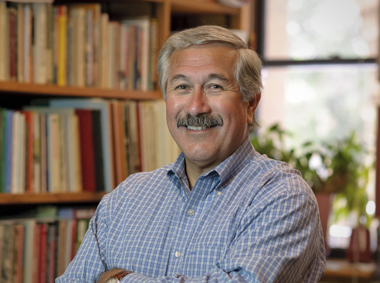 When Stanford Professor Al Camarillo asks people if they know about Compton, he usually gets a response filled with stereotypes.
When Stanford Professor Al Camarillo asks people if they know about Compton, he usually gets a response filled with stereotypes.
“Everybody knows about Compton,” Camarillo said. “I say, ‘What do you know about Compton?’ It’s a black ghetto. Gangsta Rap. The Crips and the Bloods. Alright, those are realities, but they are not the reality.”
For the past few years, Camarillo has been writing a book about the city to reveal a more nuanced picture — one that shows the city grapples with racial divides but also has very real hopes.
He’s starting his journey by taking a look at his own family’s experience in the city. His father moved to Compton in 1914, and Camarillo grew up in a Mexican-American barrio in the city in the 50s and 60s. He says his life growing up was intertwined with Compton becoming black.
“By the time I’m in middle school…realtors are trying to make their last stand, saying African Americans are not going to be allowed to cross the Alameda corridor, and of course that didn’t work after 1965 when the Watts riots blew the lid off,” Camarillo said.
When integration hit his high school, he found himself in a unique position. He went to school and was friends with the black student being bused to his white high school. Because he knew both the black and white students, administrators asked Camarillo to help mediate racial tensions. But, he says, the meetings over cookies didn’t help ease the divide.
“There was enormous reaction to the black kids coming to campus,” Camarillo said. “There were fights and graffiti, saying go back to the west. I mean, it was really bad,” he said.
In today’s Compton, the white community virtually doesn’t exist. While blacks are still heavily influential in the community, the majority ethnic group is now Latino. In 2000, Latinos outnumbered blacks in the community, and the 2011 census shows an even greater number of Latinos.
For his book, Camarillo gathered about 100 oral histories from residents in different ethnic groups and generations. He said the interviews with older black residents show that their perception of the community doesn’t mirror the stereotype embedded in popular culture.
“[For blacks] to break into a white community was an enormous achievement,” Camarillo said. “They speak of it like Nirvana. Compton is nirvana. You have to appreciate the nature of the oppression that blacks suffered to understand those comments.”
When he interviewed immigrant Latinos, Camarillo found they also moved to the city for a chance to buy an affordable home and build a family. Those are goals that transcend race or generation, says Camarillo.
“The reality of Compton is it’s populated by African American and Latino families that are trying to make the best of what they have…they are trying to make life livable amid a poor population…so that’s a fundamental human experience for people in Compton, whether it’s 60 years ago, 100 years ago or today,” Camarillo said.
Camarillo’s book is tentatively titled, “Going Back to Compton: Reflections of a native son on an infamous American city.” He says it should be done in about two years.









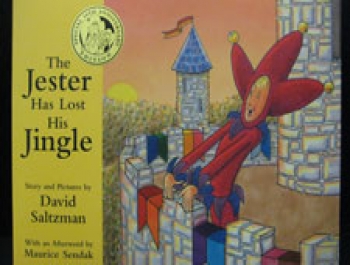 The Los Angeles Times Festival of Books is opening a new chapter at the University of Southern California. For the first time in 15 years, the event is switching locations, and the change of location brings one of the authors a little closer to home.
The Los Angeles Times Festival of Books is opening a new chapter at the University of Southern California. For the first time in 15 years, the event is switching locations, and the change of location brings one of the authors a little closer to home. Councilmember Bernard Parks and Parks and Recreation Superintendent Mark Mariscal broke ground today on a new skate park in the Jackie Tatum / Harvard Recreation Center in South Los Angeles.
Councilmember Bernard Parks and Parks and Recreation Superintendent Mark Mariscal broke ground today on a new skate park in the Jackie Tatum / Harvard Recreation Center in South Los Angeles.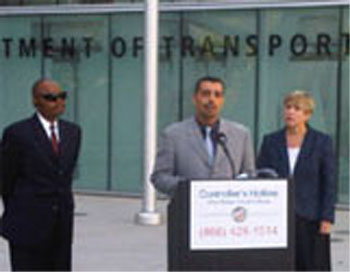 There are significant issues of waste, and there are financially irresponsible decisions made by the Los Angeles Department of Transportation — at least that’s what City Controller Wendy Greuel found in a recent investigation of the department.
There are significant issues of waste, and there are financially irresponsible decisions made by the Los Angeles Department of Transportation — at least that’s what City Controller Wendy Greuel found in a recent investigation of the department.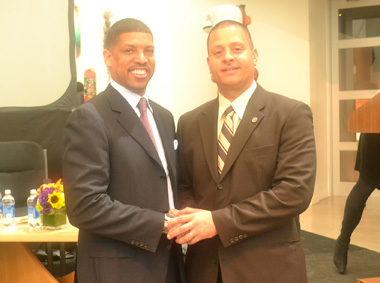 The theme for the Los Angeles Urban League’s Spring Symposium was “Place-Based Neighborhood Change: Successes, Challenges, and Opportunities” which focused on how lives can be improved one neighborhood at a time. Held on Monday at the California African American Museum, this event brought together some of the most experienced and dedicated community activists and organizations.
The theme for the Los Angeles Urban League’s Spring Symposium was “Place-Based Neighborhood Change: Successes, Challenges, and Opportunities” which focused on how lives can be improved one neighborhood at a time. Held on Monday at the California African American Museum, this event brought together some of the most experienced and dedicated community activists and organizations.
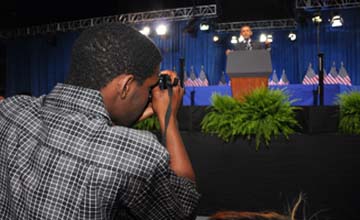 Trestan Fairweather had eye to eye contact with President Obama as he photographed the POTUS delivering his speech; Diana Parra Garcia videotaped;
Trestan Fairweather had eye to eye contact with President Obama as he photographed the POTUS delivering his speech; Diana Parra Garcia videotaped; 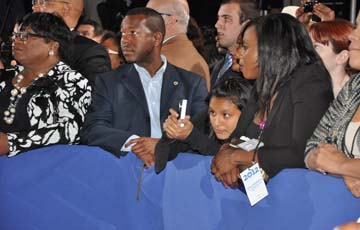 and KABC-7 News caught Mia Henry snapping up-close and personal pictures of President Obama, watch for yourself at
and KABC-7 News caught Mia Henry snapping up-close and personal pictures of President Obama, watch for yourself at 




